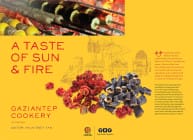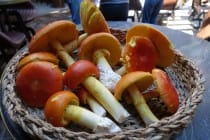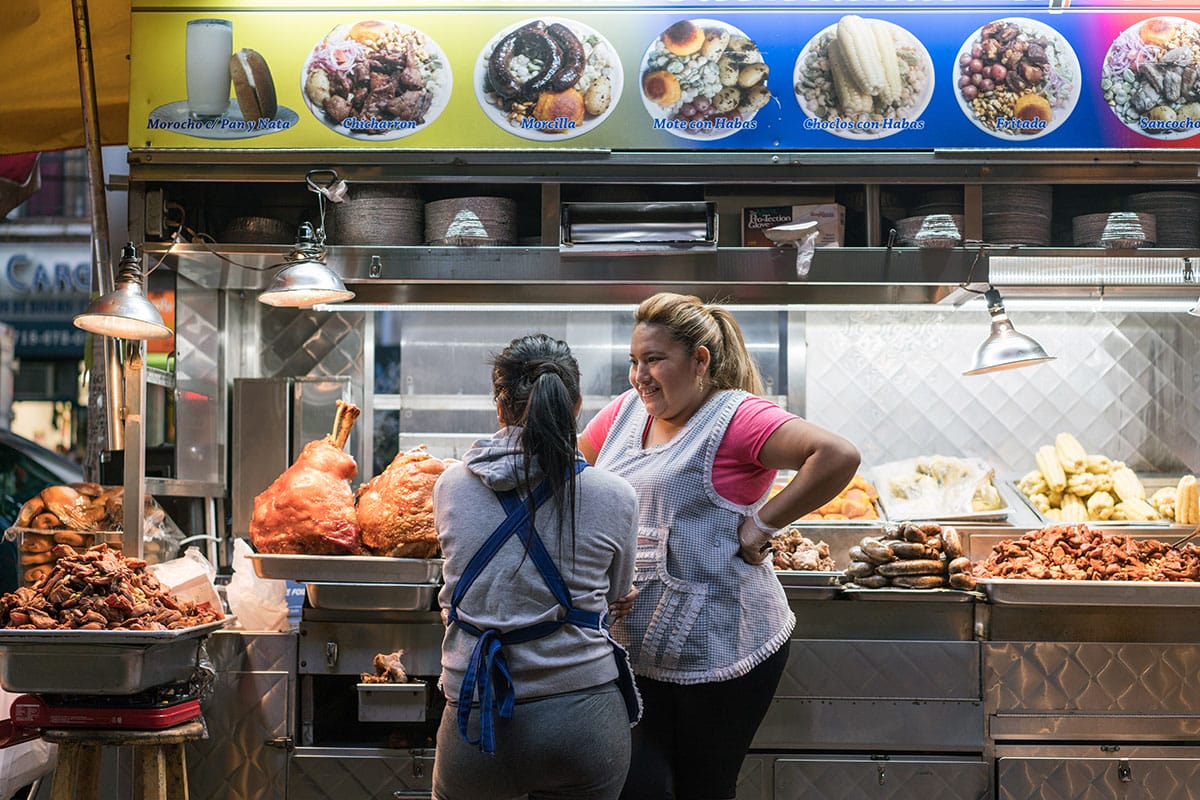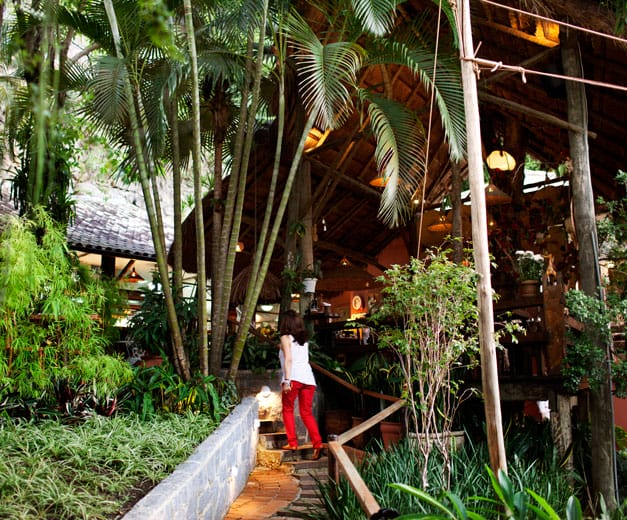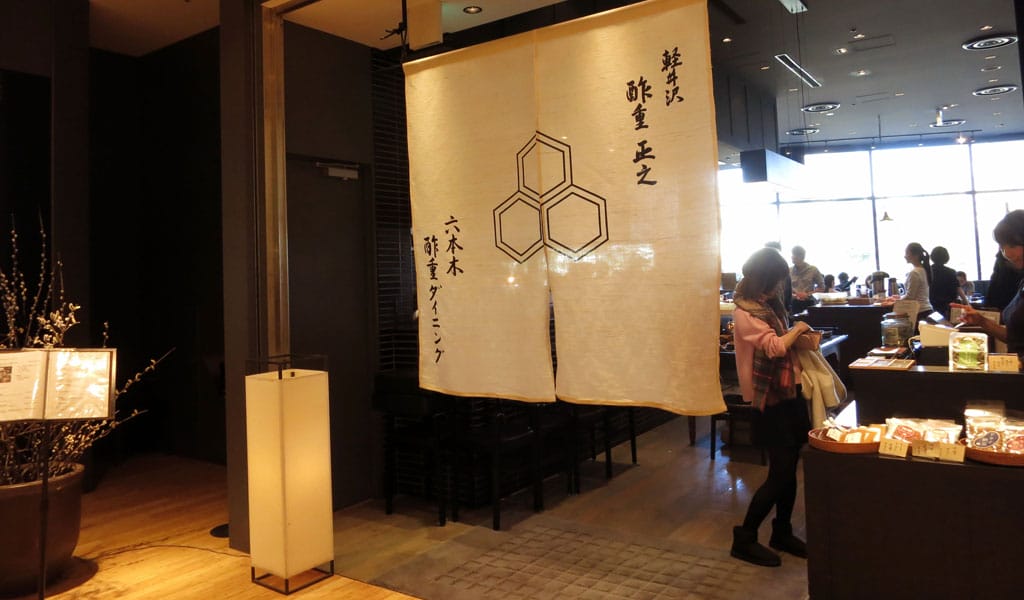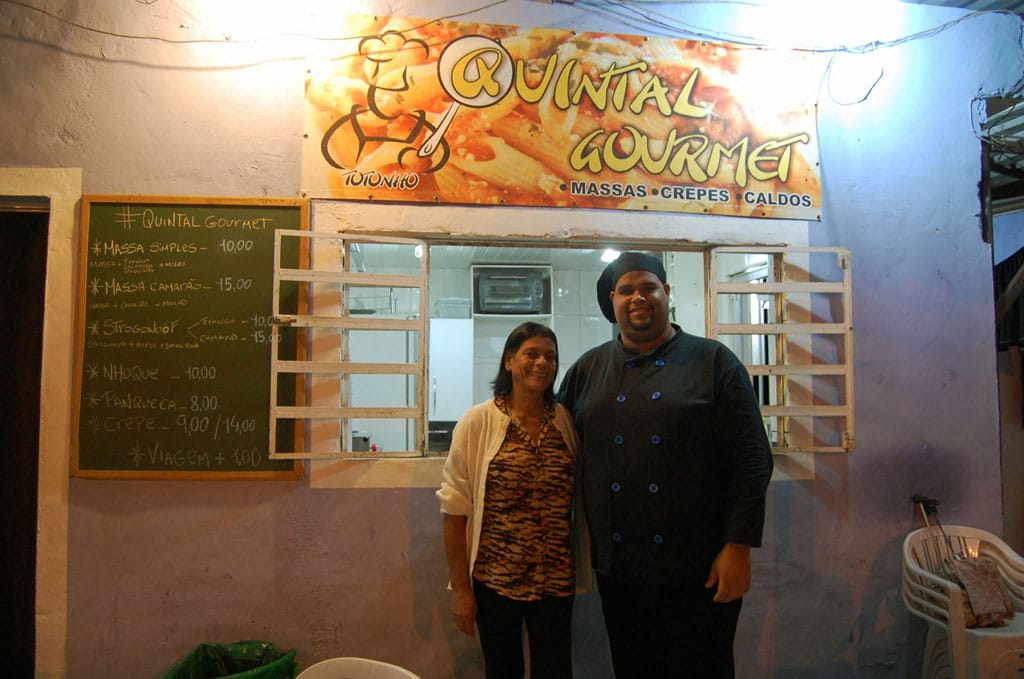Well-intentioned food appreciators have often made the error of believing that touristy is the opposite of authentic. The same goes for tourism and cultural exploration in general. The relentless search for the most local anything becomes based not on how locals themselves regard this thing but on how many fellow outsiders like ourselves have found it. (The fewer, the better, so goes the logic.) The localness of the thing is inverted, with the outsider becoming the arbiter of what is “authentic.” But if we, the outsiders, put so much effort into finding what is local, what’s wrong with locals making a similar effort to reach out to us?
We reject this silly authentic/touristy dichotomy. Dropping the pretension on all sides would open far more gastronomical doors.
With its bilingual menu and staff, romantic mood lighting and jazzy ambient music, Aprazível doesn’t have the trappings of a backstreet find. Tourists love it, and we’ve heard reports that Brazilians have popped the question here. We couldn’t endorse it more highly.
In a city where temperatures frequently reach above 100 degrees F, many carioca dining joints count on their sliding doors and air conditioning units attracting diners as much as the food itself. Aprazível took the opposite tack. Before Ana Castilho bought this house about two decades ago, the previous residents had included a hippie collective of artisans. That’s because it hardly looks like much of a livable family space.
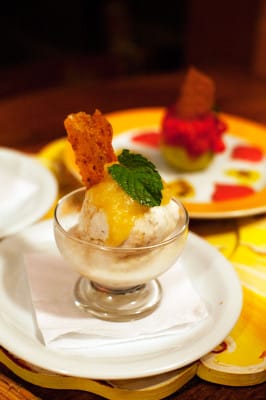 Perched on a steep hillside in the historical Santa Teresa neighborhood, Aprazível’s space stretches up about 100 feet. The daunting rock face that forms the back of its top floor was built as a contention wall by African slaves in the 19th century. The restaurant’s nearly 6,000 square feet are a series of patios and tree houses covered by thatched roofs and tiled ceilings and connected by thick stone steps. Light fixtures hang from the trees that droop into diners’ space. The forest around and inside the dining rooms includes a tree species near extinction, in addition to orchids, bromeliads, banana trees, bamboo and the curious rhipsalis, all tended by Aprazível’s full-time gardener.
Perched on a steep hillside in the historical Santa Teresa neighborhood, Aprazível’s space stretches up about 100 feet. The daunting rock face that forms the back of its top floor was built as a contention wall by African slaves in the 19th century. The restaurant’s nearly 6,000 square feet are a series of patios and tree houses covered by thatched roofs and tiled ceilings and connected by thick stone steps. Light fixtures hang from the trees that droop into diners’ space. The forest around and inside the dining rooms includes a tree species near extinction, in addition to orchids, bromeliads, banana trees, bamboo and the curious rhipsalis, all tended by Aprazível’s full-time gardener.
Castilho says the Swiss Family Robinson construction happened naturally. She purchased the property when she saw a drawing of it on a piece of paper while she was studying gastronomy in New York. In her early days, she cooked on a conventional stove while a helper held an umbrella over her head. She recalls when a celebrated architect came to the restaurant: “He said, ‘This architecture is so beautiful! I said, ‘What architecture? This was a spontaneous construction.’”
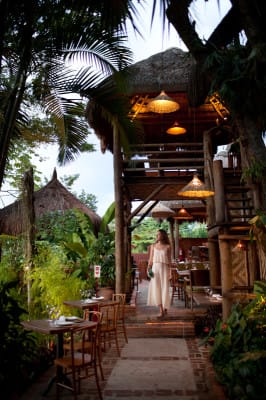 Castilho’s contemporary Brazilian cuisine consists of thoughtfully prepared national favorites, like moqueca (fish and coconut milk stew) and cabrito (goat cooked in wine and served with yam and caramelized onions). She says her menu is so suited to the Brazilian palate that she hasn’t changed it in 19 years. Her signature appetizer is the palmito fresco assado, heart of palm slow-cooked until tender and served on a bamboo plate with cashew pesto. Our most important tip: be sure to save room for the desserts, such as the steamed guava cooked in passion fruit sauce and the carimbó, Brazil nut ice cream served with cupuaçú jelly.
Castilho’s contemporary Brazilian cuisine consists of thoughtfully prepared national favorites, like moqueca (fish and coconut milk stew) and cabrito (goat cooked in wine and served with yam and caramelized onions). She says her menu is so suited to the Brazilian palate that she hasn’t changed it in 19 years. Her signature appetizer is the palmito fresco assado, heart of palm slow-cooked until tender and served on a bamboo plate with cashew pesto. Our most important tip: be sure to save room for the desserts, such as the steamed guava cooked in passion fruit sauce and the carimbó, Brazil nut ice cream served with cupuaçú jelly.
Authentic, touristy, local and beloved: Castilho’s home lives up well to its name. Aprazível means “pleasurable.”
 September 6, 2014 First Stop
September 6, 2014 First Stop
Editor’s note: In the latest installment of our recurring feature, First Stop, Tracy […] Posted in Rio June 14, 2021 Suju Dining Rokkaku
June 14, 2021 Suju Dining Rokkaku
Many people think of miso as the soup that gets tacked onto every Japanese meal. We can […] Posted in Tokyo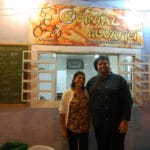 July 26, 2016 Quintal Gourmet
July 26, 2016 Quintal Gourmet
Quintal Gourmet is the story of a doting son, one who's also delighted to be able to […] Posted in Rio
Published on March 17, 2014
Related stories
September 6, 2014
RioEditor’s note: In the latest installment of our recurring feature, First Stop, Tracy Chang tells us what and where she ate when she was in Rio this summer during the World Cup. Chang headed up marketing and communications for Martín Berasategui at his three-star Michelin restaurant in San Sebastián, Spain, and, upon returning to Boston,…
June 14, 2021
TokyoMany people think of miso as the soup that gets tacked onto every Japanese meal. We can still remember our first experience of Japanese food in the West, when the waiter brought the soup at the end of the meal, and someone thought he’d forgotten to serve it at the beginning. Any self-respecting Japanese meal,…
July 26, 2016
RioQuintal Gourmet is the story of a doting son, one who's also delighted to be able to spend more time in his home, the City of God. Yes, the one from the movie. Carlos Vinícius, 29, a man as towering as he is smiley, looks at his mother, wiry and fast-talking Joyce, with a doe-eyed…


















